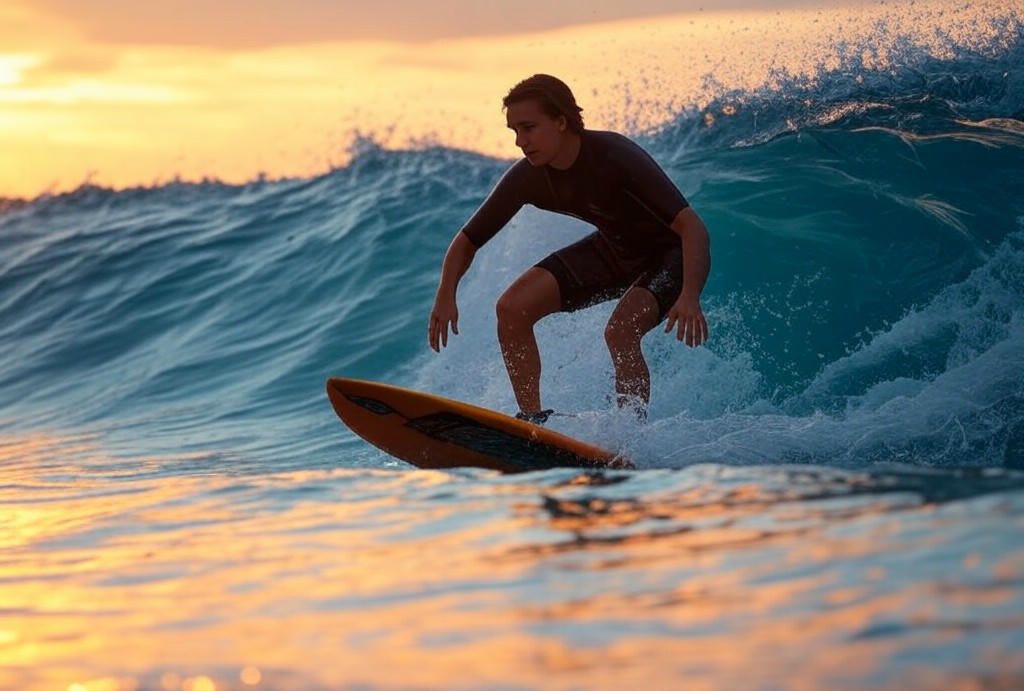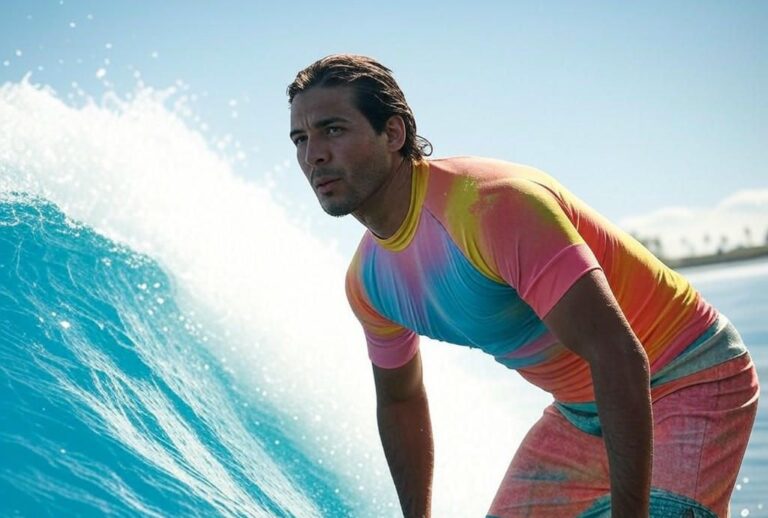The Unseen World of Big Wave Surfboard Shaping
When the ocean swells swell into the realm of the monstrous, only a select few dare to challenge them. Surfers like Kai Lenny, Jamie O’Brien, and the legend himself, Laird Hamilton, have etched their names into surfing lore by riding what seem to be liquid skyscrapers. But the key to taming these giants isn’t just the surfer’s prowess—it’s the surfboard itself, meticulously shaped by artisans whose secrets have been whispered from shaper to shaper, tucked away in the dust of their shaping rooms. Here’s the definitive scoop on the 14 surfboard shaper secrets to mastering big waves, a hot trend that’s currently flooding social media and stirring up the surfing community.
1. The Art of the Round Tail
What sets the big wave boards apart, like the ones used by Kai Lenny to conquer Jaws? The round tail, folks. It’s all about that continuous curve. When you’re dealing with mountains of water, a round tail offers that seamless transition into the wave, allowing for effortless turns. “I couldn’t believe this twist…” Kai told me over a post-surf coffee. “The round tail just hugs the wave—it’s like the board becomes an extension of your body.”
2. The Gun’s Magic Formula
Now, let’s talk about “guns,” those long, narrow boards designed to cut through the biggest surf. Shapers like Gerry Lopez have spent decades perfecting this formula. It’s not just about length; it’s the volume distribution, the rocker, and that subtle, sexy curve that matters. “The wave face is vertical,” Gerry once quipped in an X post, “you need speed, and that gun shape gives you the speed like nothing else.”
- “The Wave Slice” technique requires speed, and the gun provides it.
- The longer board length reduces drag—less drag, more glide.
3. Fins for the Win
The fins of a big wave board aren’t just for looks. It’s a dance of stability and maneuverability. “I’ve seen some wild things in my time, but these fin setups are something else,” said Peter Mel, who has ridden some of the gnarliest waves on earth. “Big wave fins are about balance, the right number, and the right size,” he added. Multiple large fins provide the necessary grip when you’re dancing on the edge of disaster.
4. Volume Is the Name of the Game
When paddling into a wave that could easily swallow a small building, you need a board that’s buoyant but not a barge. “It was unreal,” remembers Billy Kemper after his record-breaking paddle in at Jaws. “The board had to be just right, not too fat, not too thin. You find that balance, and you’re on a rocket.”
5. The Channel’s Whisper
Subtle concaves on the bottom of a big wave board can make or break your ride. These channels direct water flow, adding grip when you’re facing a wall of water. “The channels are like a surfboard’s whisper,” Shane Dorian once shared. “They tell the board where to go when you’re upside down and life is a blur.”
6. Rocker Ruler
The board’s curve from nose to tail, known as the rocker, is critical. A flatter rocker might work on smaller waves but when the ocean decides to flex, you need that nose lift. “@user dropped the tea…” on X with a pic of Greg Long’s board at Mavericks, revealing an unusually pronounced nose rocker. “It’s all about maintaining speed and control,” Greg explained. “You need to stay ahead of the wave.”
7. The Material Matters
What do you make these beasts out of? It’s a delicate balance between strength and weight. Epoxy, foam, or wood, each material brings its own flavor to the board. “I’ve seen the future of shaping,” declared Mark Richards on the podcast, “it’s composite materials. They’re strong, light, and they flex just the right way.”
8. Weight: The Unseen Secret
The weight of a big wave board is a closely guarded secret. Too light, and it’s too responsive for the massive forces; too heavy, and it’s a drag. “You want it just under your feet,” Shane Dorian shared in a video clip. “It’s the balance between the two that gives you that perfect feel.”
9. The Magic of Margins
When waves are colossal, even the edges of the board, the rails, play a big part. Shapers like Mike Snedecor have pushed the boundaries of rail design, focusing on the bevel, the edge that’s not quite an edge, but that’s where the magic happens.
10. Custom Fit for Every Giant
No two waves are the same, so why should boards be identical? Customization is key. “Every shaper has their own fingerprint,” says Tom Curren, who’s shaped some of the most iconic boards for big wave riders. “It’s about understanding the wave and the rider, then making that perfect match.”
11. Keeping Secrets
In the world of big wave surfing, secrets are currency. “The shape of my board? That’s like asking a chef for their secret sauce recipe,” laughed Jamie O’Brien. Shapers guard their techniques like treasure. “It’s what sets you apart in a sport where fractions of seconds can mean life or death,” he continued.
12. Technology’s Touch
It’s not just wood and epoxy anymore. 3D printing, CAD software, and advanced materials are entering the surfboard game. “I’ve seen chaos, but this one’s next-level,” declared Greg Long in an interview, showing off his latest board, designed with the aid of high-tech tools.
13. Collaboration and Community
Big wave surfboard shaping is a community endeavor. “The best secrets aren’t kept,” shared Shane Dorian. “They’re shared among those who understand the weight of what we’re facing out there.” From shaper to rider, from rider to shaper, the exchange of ideas fuels innovation.
14. The Spirit of the Shaper
Lastly, the spirit of the shaper is woven into every board. “Shaping is not just about the board,” mused Dick Brewer, a legend among shapers. “It’s about understanding the ocean, the rider, and their dance together.” It’s this passion, this deep connection to surfing, that makes these boards not just tools, but works of art.
And there you have it, folks, the 14 surfboard shaper secrets that are not just changing the game, but redefining what’s possible when surfers and their crafts unite to tackle the largest, most challenging waves the ocean can throw at them. “This could change everything,” some say, and they might be right. As for what’s next, expect innovation, expect the unexpected, and keep your eyes peeled for the next big reveal in the world of surfboard shaping.


















